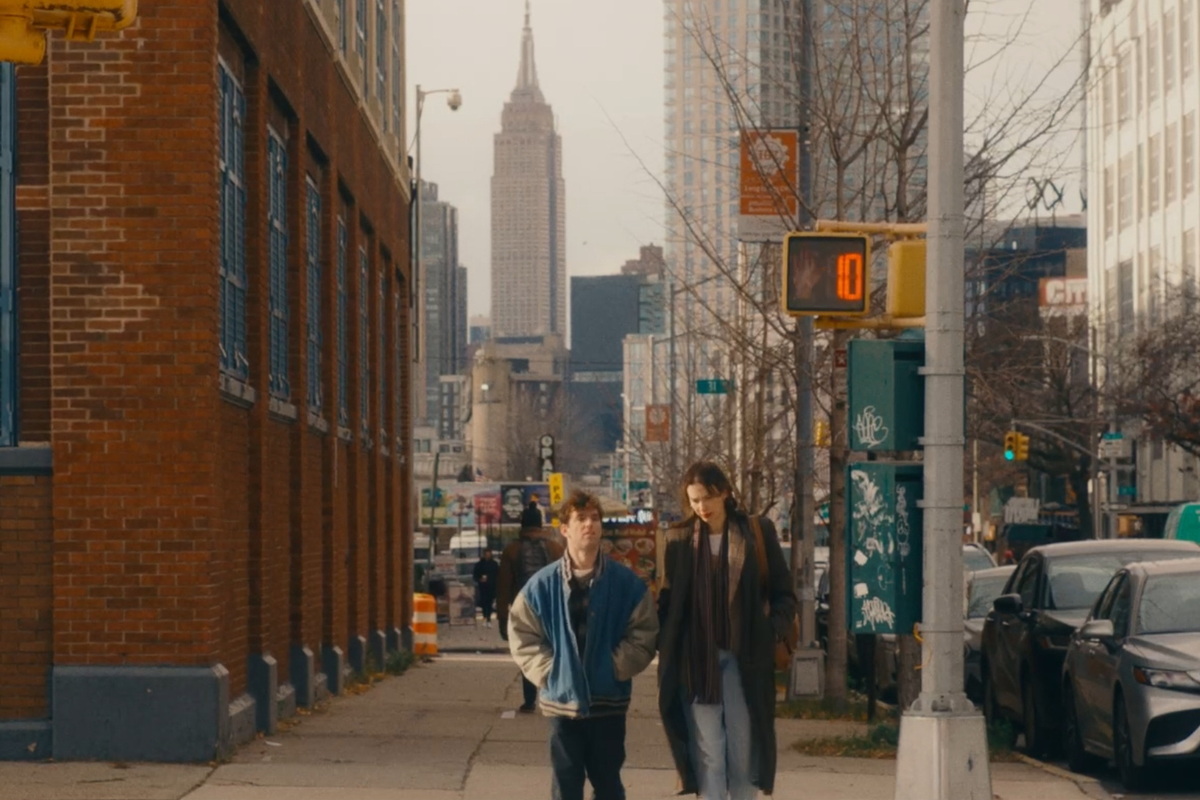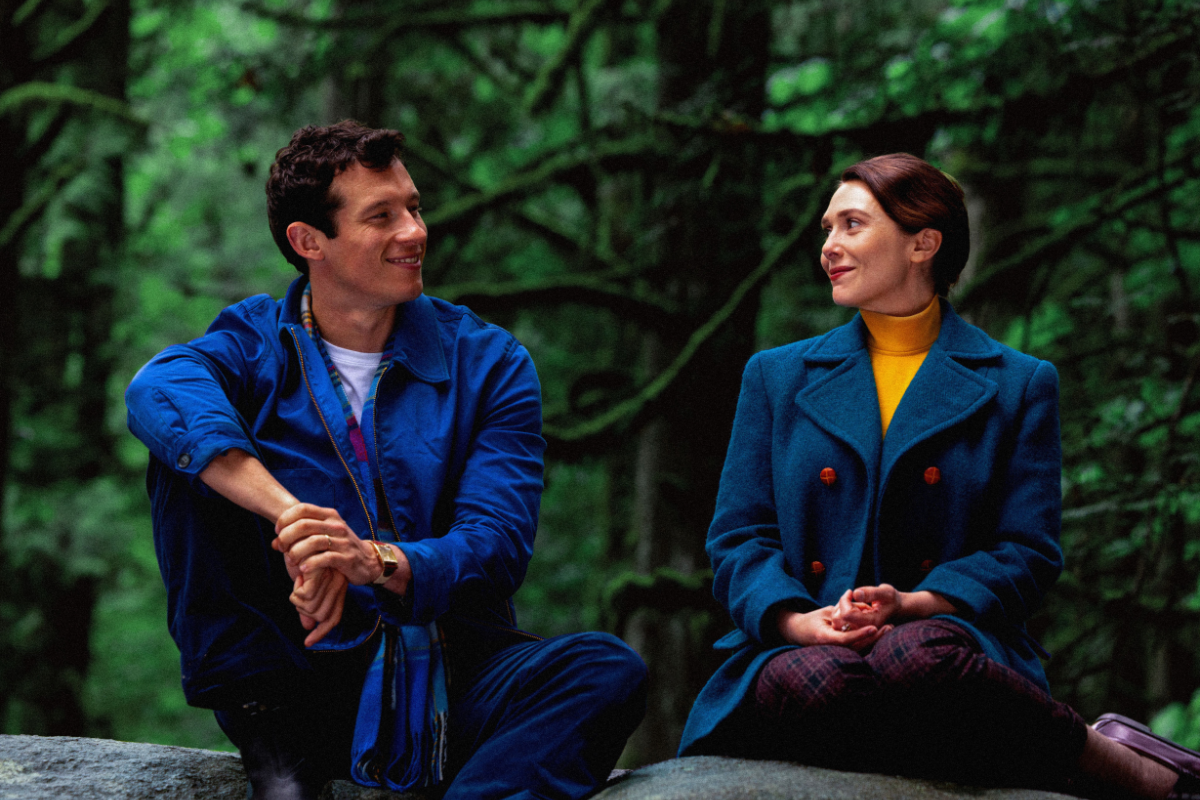Stepping Into the Past: An Interview with ‘Tokyo Vice’ Showrunner and Creator J.T. Rogers and Cinematographer Diego García
‘Tokyo Vice’ showrunner J.T. Rogers and Cinematographer Diego García speak with Script and share their adventures shooting in Japan during lockdown, the decade-long development process, and their strong optimism for a season two.
Ansel Elgort stars as Jake Adelstein, an ex-pat journalist, working to uncover the secret underground world of yakuza gangs in Tokyo Vice. The latest series by streaming giant HBO is helmed by a number of premier visionaries, like visionary filmmaker Michael Mann (Heat), the acclaimed Mexican cinematographer Diego García (Wildlife), and Tony Award-winning writer and now first-time showrunner J.T. Rogers (Oslo). Script was fortunate enough to speak with J.T. Rogers and Diego García about everything from its inception, the limitations and excitements of working in Japan, and whether or not audiences should expect a second season.
This interview has been edited for content and clarity.
J.T. Rogers: I am the creator, showrunner, writer, and EP on Tokyo Vice. I was the showrunner on the ground, as we shot the whole thing in Tokyo. I had my hands in everything from casting, production, design, directors, etcetera. The show is inspired by and loosely based on the memoir Tokyo Vice, which is written by Jake Adelstein, whom I have known since we met in high school in Central Missouri, doing musical theater together back in the day. I have been wanting to make a series out of this forever. Finally, forever comes to fruition, and we got to shoot the whole thing during the lockdown in Tokyo.
Patrick Devitt: How long did it take to assemble the cast and crew for the series? I read that Daniel Radcliffe was originally cast in Ansel Elgort’s role.
J.T.: Well, it took a long time as I learned my first time being a showrunner for the first time, we're seeing a show. After producer John Lesher optioned the book, Jake put us together. Soon after, John was like, 'You should write the screenplay.’ Originally, I made it as a movie, and then, as I have now learned happens at the last minute, and it all fell apart. It would have been amazing to make a movie with Daniel, who is just the loveliest guy. He was already studying Japanese since it was right before we started shooting. But it then took a number of years and other projects I was doing, and then it came back in, and Endeavor Content approached me and asked, 'Is there anything you’d like to make for us?’ And I thought you know what Tokyo Vice would actually be a lot better as a series. So, this turned out to be a blessing in disguise, and so I set about reimagining it, writing the first episode, and creating the world to show. Then they loved it and took it to HBO Max.
PD: Considering Tokyo Vice was originally planned as a single movie, will this be the first and only season of the series?
J.T.: It’s very moving how often I’m still getting calls from cast and crew that really, really want to keep going. I want to keep going. I’m ready. It's all mapped out and ready to go in my mind. Everyone would like to keep doing it. We'll just wait… The magic metric box in the sky will tell us; we seem to be catching people's attention, and if we'll know sooner rather than later if we get to keep going.
PD: When the show finally landed at HBO, what was going through your brain?
J.T.: Once you have been given the green light to do it, there is this enormity of putting all the pieces together — from casting to directors to multiple DPs to a crew to be able to find endless locations in a city that is not set up for film and television.
PD: Diego, you’ve worked as the cinematographer for a wide range of visually striking filmmakers, such as Apichatpong Weerasethakul, Carlos Reygadas, Yorgos Lanthimos, and Nicolas Winding Refn. As one of the multiple DPs on the show, what challenges did you face shooting episodes 2 and 3?
Diego García: Tokyo is a beautiful city to shoot, but it's very tricky in terms of the permits. It’s hard to let people allow you to go into their places; it's not a very filmmaking-friendly city, because there they have a different kind of respect for sound, for space. Sometimes to get the really great locations was difficult, but somehow we did it. We made it work.
J.T.: Tokyo is sort of the opposite of a film and TV city. It is visually beyond resplendent but it's really, really hard to get locations. So, that was an enormous undertaking, but in the end, was really worth it, because we show things in the show that have never been seen. As Diego Garcia will talk to you about, he was able to capture the tone for the larger series in episodes 2 and 3.
PD: JT complimented your ability to capture the tone for the larger series in episodes 2 and 3. Can you talk about the process of location scouting in Japan? Had you ever visited prior to Tokyo Vice?
DG: No, for me, it was my first time in Japan. For many years I’ve been following and doing research about the culture. Of course, when I heard about doing any artistic approach in Japan, I was very thrilled and excited to join. It's a beautiful and deep culture, mixing ancient and modern in the same place. I just let all these beautiful things get to me and be inspired by the city, by the atmosphere, by the people. I think that was part of what really inspired me.
J.T.: It was kind of thrilling to have a canvas that hasn't been shown in American and Western television or films.
PD: What camera did you work with?
DG: I choose the whole camera set up for the entire season. We used two cameras: the Alexa LF and the Panavision H Series. I had previous good experiences with the Alexa LF, but I always feel that it's a very hard sensor from the box. It feels very, very sharp, and you can see more than what you want. I try to soften it with vintage glass, and I think Panavision’s reconstructed old lenses are a good combination.
PD: Does shooting on digital lend itself to shooting in Tokyo?
DG: Yes, Tokyo is a great city to photograph. It has a lot of character, lots of power. I wouldn't say easy, but there was so much to shoot, like the beautiful locations with like real decorations. Of course, we modified many of those, but we were actually looking for locations that already had a feeling, or something interesting that we can use for our scenes.
We worked with this amazing production designer Kikuo Ohta, who did a lot of research about the period, and of course, for the Yakuza culture. We tried to portray the real thing, honoring and respecting everything.
PD: Diego, you shot half of the original pilot with Michael Mann before COVID shut everything down. How important was it to further the visual grammar of Michael Mann’s pilot?
DG: That's a good question, because Michael has a very particular visual language and filmmaking approach. So, first of all, out of respect for his work, I will never try to like imitate, copy, paste whatever he was creating. I thought everything that I learned from him, just take things and just try to evolve it and try to move forward in the rest of the season.
PD: J.T., how did working as the showrunner of Tokyo Vice compare to your last project Oslo?
J.T.: Well, Oslo was a very unique experience, because not only did I radically adapt and change the film, which was based on my own stage play. For example, the director of the stage play, my long-term collaborative Bartlett Sher directed the film, alongside [executive producer] Steven Spielberg. We worked hand and glove, even when I would be on set in Tokyo. Unlike a lot of screenwriters who are not brought to the table, let’s say, I would get a call from Bart [while] on set in Prague, asking, 'I want to change this part of the speech. Are you OK with that?’ So, I would say I had a very collaborative process on that; it was great.
PD: Both Tokyo Vice and Oslo were not set in the US, had you been to Japan prior?
J.T.: Oh, yeah! I just find that I keep [being] drawn to stories and wherever the medium that [they] are set, beyond the confines of the kitchen sink. American storytelling can be amazing. Don't get me wrong. It's just that's not my patch. I grew up in Southeast Asia for a number of years as a child, and I have traveled a lot in the world. For Tokyo Vice, I traveled numerous times to interview people about the ex-Yakuza, journalists, etcetera.
For Oslo, I traveled to the Middle East. I just find these interesting stories — be they about peacemaking in a castle with Johnny Walker Black, or trying to get a story about a Yakuza and nasty Tokyo. But that person's story set against some larger vast interesting canvas, I guess just gets my juices going in a way: it's the storytelling.
PD: Both projects are set a few decades back; is this intentional?
J.T.: You have to finish something, and sometimes in multiple projects before you have any sense, on some levels of why you did it or how it came about. You're sort of sniffing your way through it as you're doing it. So, looking back at Oslo and the first season of Tokyo Vice, they are both period in the sense that they're not in the “iPhone data-driven world” we live in, but they're close enough that they're not World War II films.
One of the reasons — in hindsight — I find myself going to stories that are set a little bit in the past is that it gives you a little bit of distance. You're able to see things with a bit more clarity, and sometimes, from a storytelling standpoint, a bit more ruthless… and hopefully better because of it. You're not trying to catch up with what happened yesterday, and how that might affect the script. Now having said that, watch the next thing I make will be set literally today. But I do find that having that little bit of distance often can lead to… it can be fruitful for a story.
Tokyo Vice is now streaming on HBO Max.
Learn more about the craft and business of screenwriting from our Script University courses!
Patrick Devitt is a Manhattan-based writer and artist.







